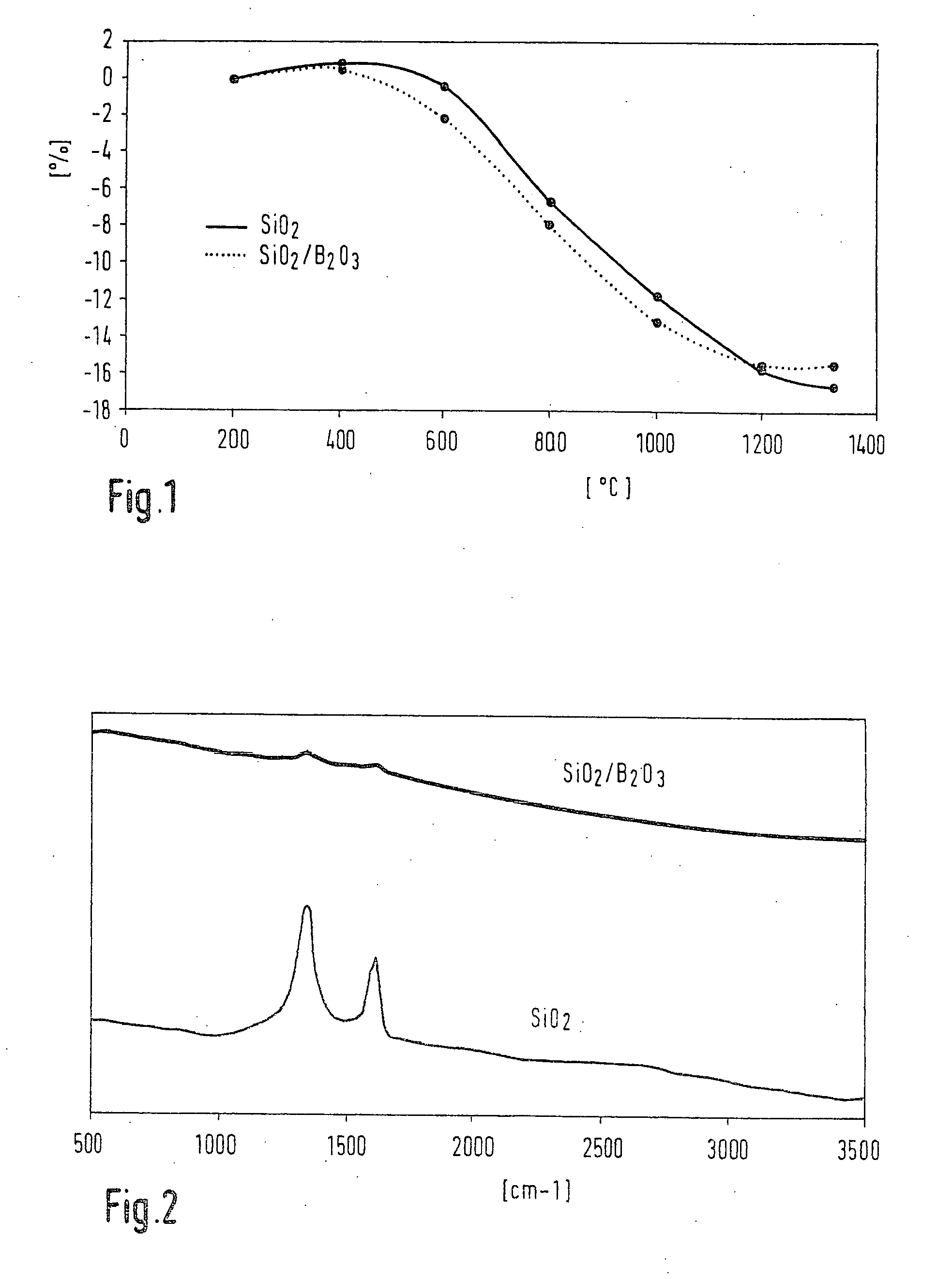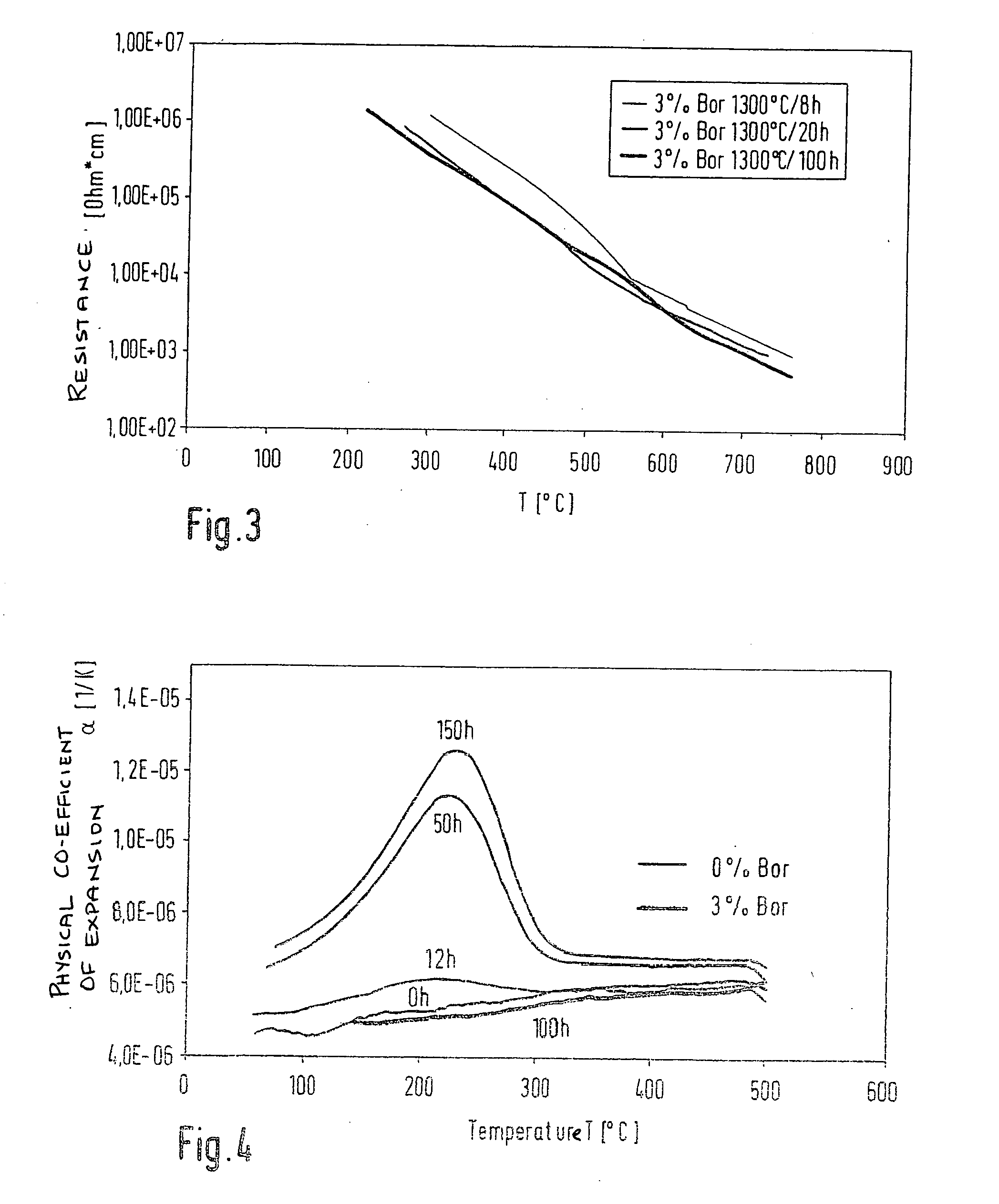Ceramic composite material, method for the production thereof, and pencil-type glow plug containing such a composite material
a composite material and composite material technology, applied in the field of ceramic composite materials, can solve the problems of requiring additional fillers, and achieve the effects of reducing the aging of the electrical resistivity, and improving the functional properties
- Summary
- Abstract
- Description
- Claims
- Application Information
AI Technical Summary
Benefits of technology
Problems solved by technology
Method used
Image
Examples
example 1
[0025] Two compounds are produced, for example, according to German Published Patent Application No. 195 38 695 having an identical volume fraction of fillers, one of them containing 75 vol.-% polymer (polysiloxane resin) and 25 vol.-% SiO2 and the other containing 75 vol.-% polymer (polysiloxane resin) and 35 vol.-% of a SiO2 / B2O3 mixture. The SiO2 / B2O3 mixture contains 80 wt.-% SiO2 and 20 wt.-% boron or B2O3.
[0026] The compounds are prepared by grinding the relevant starting powder, subsequent screening using a 150 μm mesh size, followed by cross-linking and molding via hot pressing.
[0027] Subsequently, the samples are pyrolyzed into compact samples at a heat-up time of 25 K / h to a final temperature of 1300° C.
[0028] In the pyrolysis to a final temperature of 1300° C., the sample containing no boron displayed a shrinkage in length Δ1 / 1 of −16.5%, a loss of mass Δm / m of −17.0% and an electrical resistivity of approximately 105 Ω•cm while the boron-containing sample had a shrink...
example 2
[0033] Again, based on the teaching of German Published Patent Application Nos. 195 38 695 or 100 20 392, boron-containing insulation compounds are produced for a ceramic sheathed-element glow plug, which are prepared, starting with appropriate ceramic starting mixtures, using a mixing and kneading process, followed by molding using transfer molding.
[0034] The composition of the different ceramic starting mixtures produced is within the ranges 50 to 80 vol.-% polysiloxane (including an addition of 1 wt.-% zirconium acetylacetonate, which is used as a catalyst for the cross-linking of the polysiloxane, e.g., in hot pressing), 0 to 10 vol.-% SiC as a filler, 0 to 20 vol.-% Al2O3 as a filler, 0 to 20 mol.-% MoSi2 as a filler and 3 wt.-% boron, which is used in the form of B2O3. In addition, a corresponding boron-free reference sample was produced for each of the samples having varying composition within these ranges.
[0035] After molding, the pyrolysis was performed at temperatures of...
PUM
| Property | Measurement | Unit |
|---|---|---|
| temperature | aaaaa | aaaaa |
| temperature | aaaaa | aaaaa |
| temperature | aaaaa | aaaaa |
Abstract
Description
Claims
Application Information
 Login to View More
Login to View More - R&D
- Intellectual Property
- Life Sciences
- Materials
- Tech Scout
- Unparalleled Data Quality
- Higher Quality Content
- 60% Fewer Hallucinations
Browse by: Latest US Patents, China's latest patents, Technical Efficacy Thesaurus, Application Domain, Technology Topic, Popular Technical Reports.
© 2025 PatSnap. All rights reserved.Legal|Privacy policy|Modern Slavery Act Transparency Statement|Sitemap|About US| Contact US: help@patsnap.com


